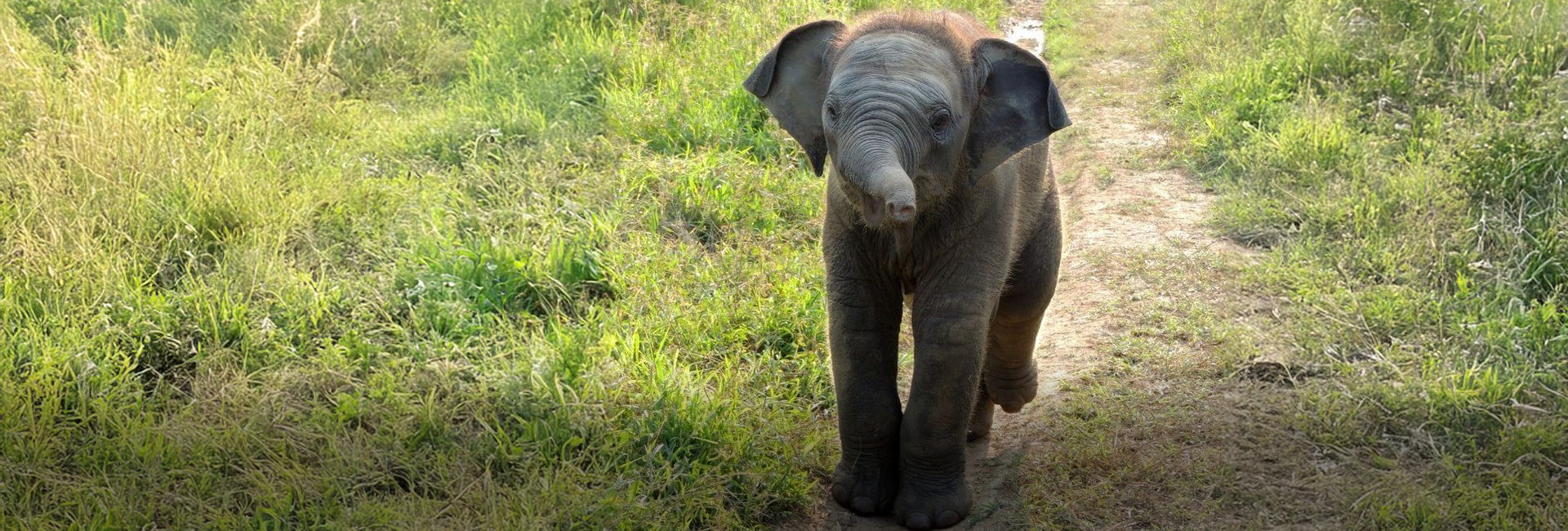Over the last few years, the project coordinators at The Great Elephant Project have encountered several new elephants across the reserves in which the project runs, and today we wanted to introduce you to the new stars of the show!:
This is a juvenile male named Ranitha. He is only a year old, and the only juvenile of his age in the herd so receives lots of attention from the older elephants. He was spotted in the Wasgamuwa National park, and he kept attempting to get close to the rangers, despite his mother’s objections! Eventually, she could not stop him, he just couldn’t resist getting close enough to their Land Rover to enable the rangers to get this adorable snap.
Ranjani is Ranitha’s mother, aren’t they a stunning pair? They originally encountered this little guy and his mum in February 2014.
This little calf is Pathum and his mum is named Ayomi. They were first spotted by the Weheragala Tank (lake) and were seen just a few days ago at Madupitiya Plains by the Tree Hut Elephant Corridor. For various reasons, such as the dry season and not being blood members of the herd, they do not always have the best access to food, and their health is not ideal. However the team will keep an eye on them, and the mother and son are a great example of why conservation efforts are so important. They were first encountered in October 2016. Ayomi also has a unique shape to her dorsal ridge, which helps the ranger to identify the elephant, a crucial objective of the project.
Suneetha is the matriarch of her herd. Her little calf is called Nimal and the rangers say he is very well fed! He is infamous for always seeking attention which even once resulted in him being punished by one of the males! She was spotted in November 2016.
This is a family group that staff decided to call the Nandas, which means aunties. The three females are all of similar ages, as are their three calves. They were often seen at the Weheragala Tank during last year’s dry season. These gorgeous girls and their babies were first spotted in August 2016.
The team at The Great Elephant Project work to identify elephants in their reserves to monitor their range, behavioural habits, social organisation and any other information that can help towards their conservation.
But why do Asian Elephants need protecting? Once free to roam across the majority of Asia, the elephants are now restricted to just 15% of their original range. Additionally, that 15% consists of fragmented and isolated populations around South and South-East Asia. They are seen as an icon of culture and religion in Asia, but their future is uncertain due to habitat loss, and poaching.
Asian elephants are crucial to the ecosystem as they graze vast amounts of vegetation, consequently spreading seeds as they do so. In forests, they create clearings in the trees, allowing sunlight to reach new seedlings which help the forest to naturally regenerate.
In light of this, the team’s objectives for the conservation of the elephants consist of;
- Identifying individual elephants, monitoring their populations and ranging habits over time.
- Collecting information on their habitat preferences to understand the most frequented locations and their spatial distribution over time.
- Identifying human-elephant conflict areas most used by the elephants and developing preventative measures and strategies for this.
The staff at the project need help to identify several other elephants to be able to help them, but this is a timely process and they welcome help with open arms. If you want to help preserve the beautiful Asian Elephants, volunteer with the team at The Great Elephant Project.




















